Surprising Little-Known Facts About Real-Life Pirates
Pirates have long been the stuff of legend and fascination, conjuring up images of swashbuckling adventurers plundering the high seas. But there’s more to these seafaring thieves than meets the eye. Here are eight surprising facts about pirates that will blow your mind.
From the wisdom behind their use of eyepatches to their surprisingly democratic societies, pirates have always been a source of intrigue and mystery. But what do we really know about these notorious criminals? Join us as we delve into the fascinating world of piracy and uncover some surprising truths about these infamous marauders.
Pirates always had a share of the loot
Pirates weren’t as cold-blooded as modern people think. Contrary to modern beliefs, they weren’t just out for themselves. In fact, pirates were known for their camaraderie and loyalty to one another. This aspect of their lives is often overlooked in popular culture.

Charters at the time required pirates to give a portion of their haul to injured crew members, ensuring they would benefit from raids. A percentage was set aside for those in recovery before distribution according to rank and other charter provisions, similar to liability coverage in insurance policies.
Their golden hoop earrings served a practical purpose
Pirates of old times were known for their bold and unconventional looks. They were often depicted wearing gold hoop earrings under their wide hats, giving off an aura of unpredictability and unlawfulness. However, these accessories served a practical purpose as well.

Source: zedge.net/ Pinterest
During battles, pirates would put gobs of wax on the golden hoops and use them as earplugs to protect their ears from the loud cannon blasts. This quick and easy tactic allowed them to cover their ears against the explosions and avoid potential aural damage.
Pirates formed same-sex unions
Pirates had civil unions known as matelotage, which allowed same-sex couples to form lasting relationships. These unions, which existed in the 17th and 18th centuries, regulated the division of income and inheritance, with sharing booty being a key aspect.

Source: onlyinyourstate.com/ Pinterest
While same-sex relationships are still not widely accepted in many parts of the modern world, pirates in the past were able to form lasting bonds with their mates. Matelotage provided a framework for these unions and allowed them to be recognized within the pirate community.
Pirates used their earrings for funeral insurance
Pirates lived exciting and daring lives, always on the hunt for treasures. However, such a lifestyle offered no guarantees of a quiet retirement. A cannonball to their heads or a sword to their bellies could bring a sudden end to their days.

Source: Baron Bruce von Boughner/ Pinterest
Pirates wore gold or silver earrings as a type of burial insurance. In case of death, the earrings’ value would cover funeral costs. This showed pirates’ practicality in planning for the future, even in the face of danger.
The Bloody Red was the most-feared pirate flag
In the 18th century, pirates like Edward England and Black Sam Bellamy were known to fly a black flag with a skull and crossbones emblem, commonly known as the Jolly Roger. The sight of this flag on a ship’s mast was a warning that an attack was imminent.

Source: Travis Burbee/ Pinterest
However, the most feared pirate flag was the Bloody Red. Its blood-red color indicated the pirates would show no mercy. It was a symbol of violence and bloodshed that struck fear into anyone who saw it flying on the horizon.
Pirates wore eye patches for night vision
Pirates had a ruthless and fearsome reputation, and an eyepatch only added to their intimidating appearance. However, the real reason behind the common usage of eyepatches among buccaneers had nothing to do with intimidation.

Source: blog.sina.cn/ Pinterest
In reality, pirates wore eyepatches to improve their vision in dark environments. By covering one eye, they could adjust to low light and move more efficiently below deck during battles. Switching the patch from one eye to another allowed them to have temporary night vision, giving them an advantage over their enemies.
Pirates once captured Julius Caesar
Pirates once thrived in the Aegean Sea, preying on unsuspecting ships. They soon discovered that taking hostages could be profitable and began demanding ransom. However, their luck ran out when they took a young Julius Caesar captive.

Source: Paintings of Ships/ Pinterest
The pirates demanded 20 talents for his release, but Caesar scoffed at the offer and countered with 50 talents of silver. The ransom was paid and Caesar was freed, but he did not forget the pirates’ deeds. He quickly assembled a small naval force to track them down and eventually crucified them all.
Blackbeard used his appearance to his advantage
Edward Teach, also known as Blackbeard, began his career as a pirate under Captain Benjamin Hornigold in 1716. His reputation grew quickly, thanks in part to his intimidating appearance.
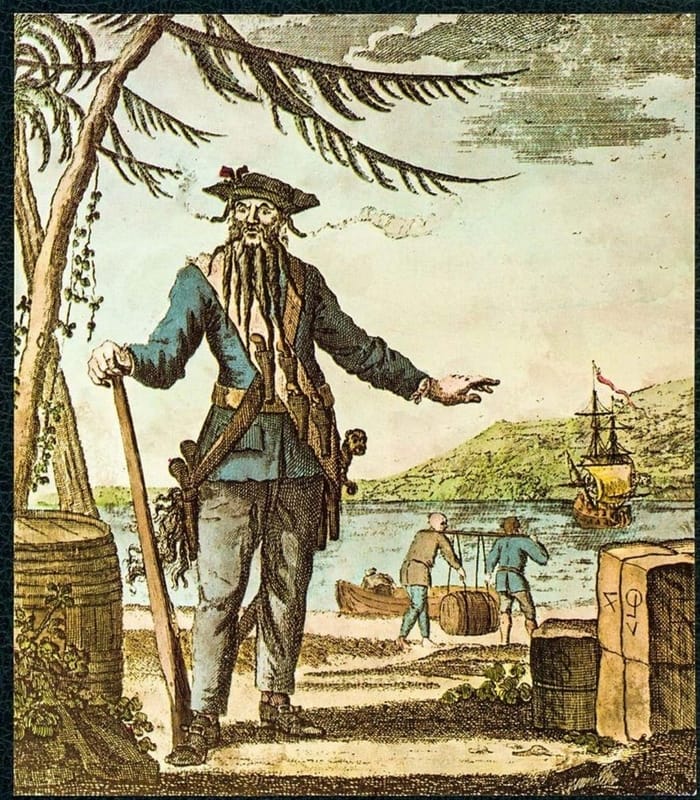
Photo: Unknown / Wikimedia Commons / Public Domain
Blackbeard was known for using slow matches made of hemp to frighten his enemies. These matches were placed under his hat and in his thick beard, causing him to appear as if he were on fire. This, combined with his red coat, gave the impression that he was the devil incarnate.
Some Pirates Were Honorable Members of Society
The notion itself seems highly unlikely. Indeed, historians had to redouble efforts to confirm its authenticity, given its paradoxical nature. But the truth stands – not all pirates were hell-born and murderous. In fact, Captain William Kidd was a totally different man when he was on land.
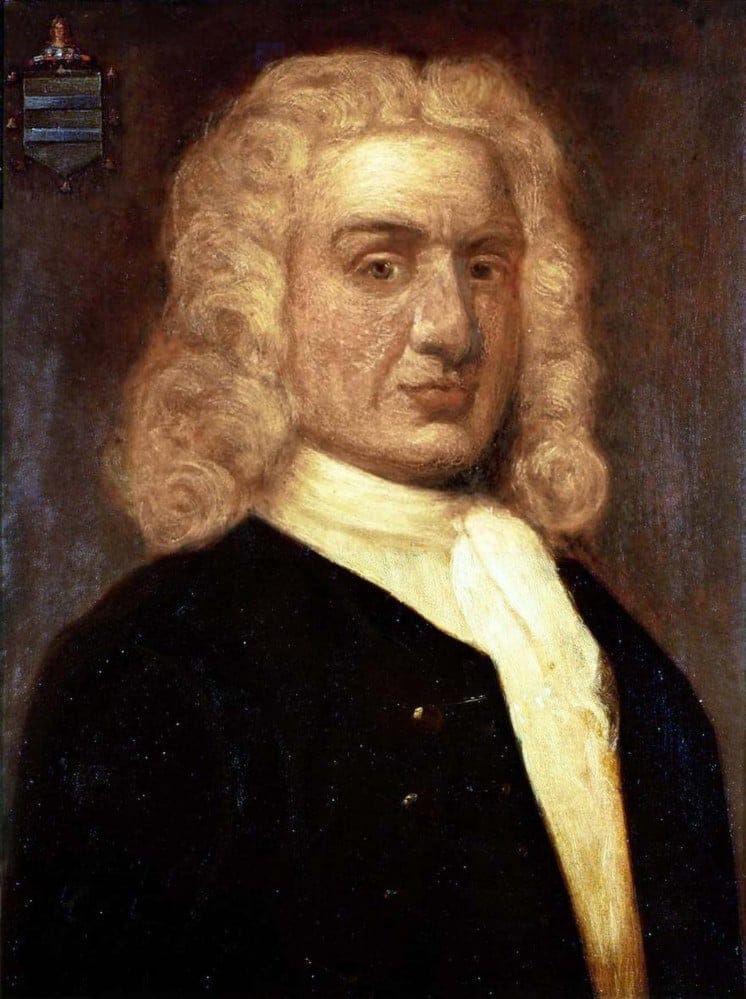
Photo: James Thornhill / Wikimedia Commons / Public Domain
In spite of his piratical background at sea, Captain Kidd was a dignified member of society. He actively supported the Trinity Church and made donations for the construction of the parish church in New York. He was a decent man who prayed with his family and even had a pew made for them.
Bumbo – Pirate Cocktails
Because water went rancid when stored inside containers during long journeys – gooey and potent with growing microbes – British Navy sailors added beer or wine to make it more appetizing. They later substituted rum, and thus the boozy pirate reputation was born.
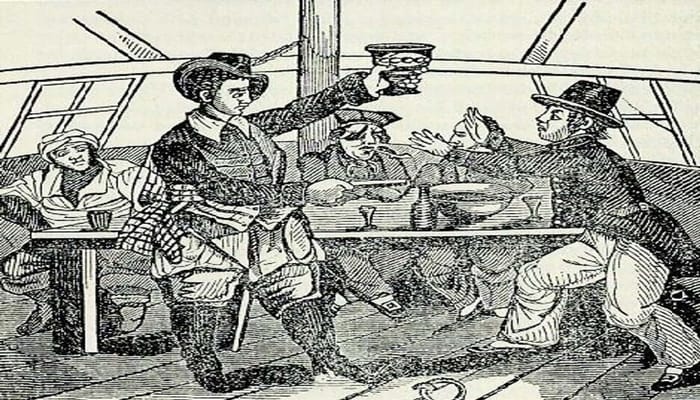
Photo: Unknown / Wikimedia Commons / Public Domain
Pirates weren’t bad with cocktails either. They took the grog and made it even better by adding lemon juice to the mixture, which also proved to be an effective solution against scurvy. With the addition of sugar, they had a mix worthy of a modern bar. This legendary pirate’s drink became known as the bumbo.
Amulet Earrings
Leading a life of danger, being constantly exposed to the elements of nature, and being prone to violence, pirates became very superstitious people. Oddly enough, their superstition was practical – a necessary mindset they developed to stay alive. Their gold or silver earrings became an embodiment of such traits, developing meaning that extended far beyond their other purposes.
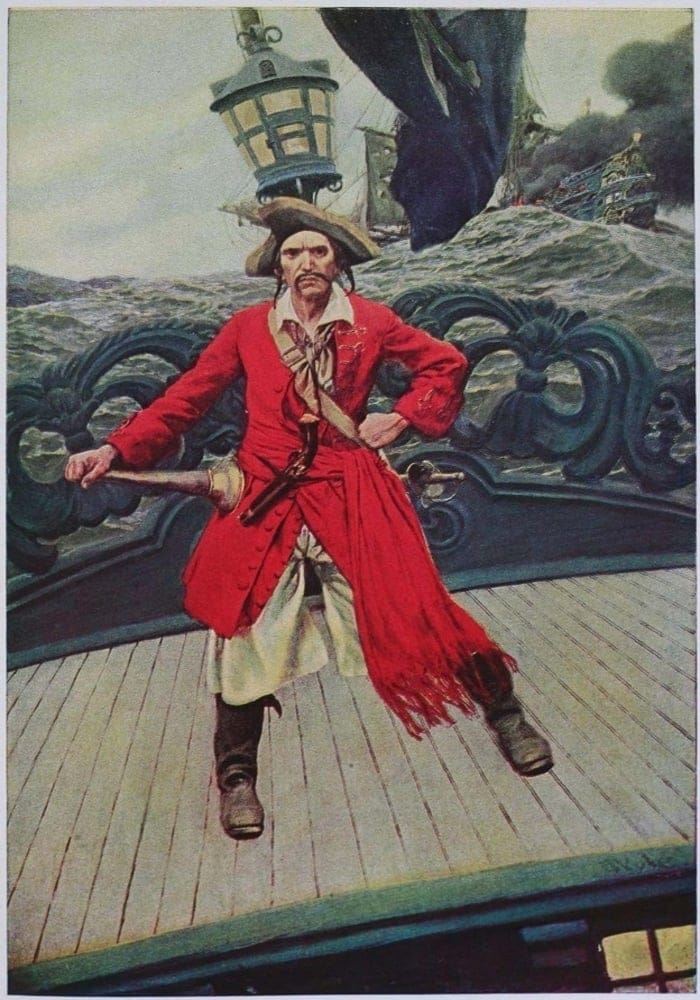
Photo: Howard Pyle / Wikimedia Commons / Public Domain
While the monetary value is self-explanatory, pirates held their earrings dear as amulets against seasickness. Some believed their jewelry had outlandish medicinal properties too, curing or improving their range of vision. While such ideas were merely old wives’ tales, they may have benefited from a placebo effect.
Pirates Rarely Buried Their Treasure
The assumption that maritime marauders often buried their loot is rife in modern representations of pirates. After all, it could be a strategically sound idea to hide their treasure on a remote island in the middle of an ocean to prevent its recapture.
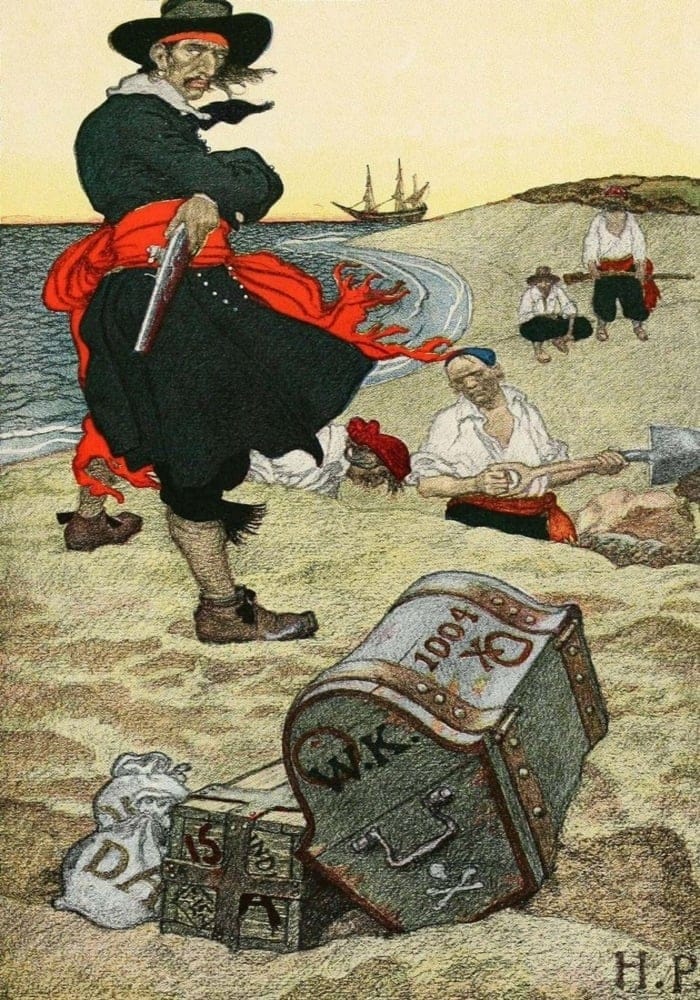
Photo: Howard Pyle / Wikimedia Commons / Public Domain
But history shows that only Capt. William Kidd was ever recorded to have done this. Wanted by the authorities for piracy and dealing with a mutinous crew in New York, he sailed for Long Island to cache his stolen valuables underground. Sadly, his buried booty was later used as evidence, and he was convicted in court for piracy.
Hot Goods
Pirates had no qualms about taking everything valuable from a raided ship, including the lives of their captives. But not everything of value meant gold, silver, or precious stones, which had to be guarded like a fortress in transit and which was more of a burden if anything until they reached land.
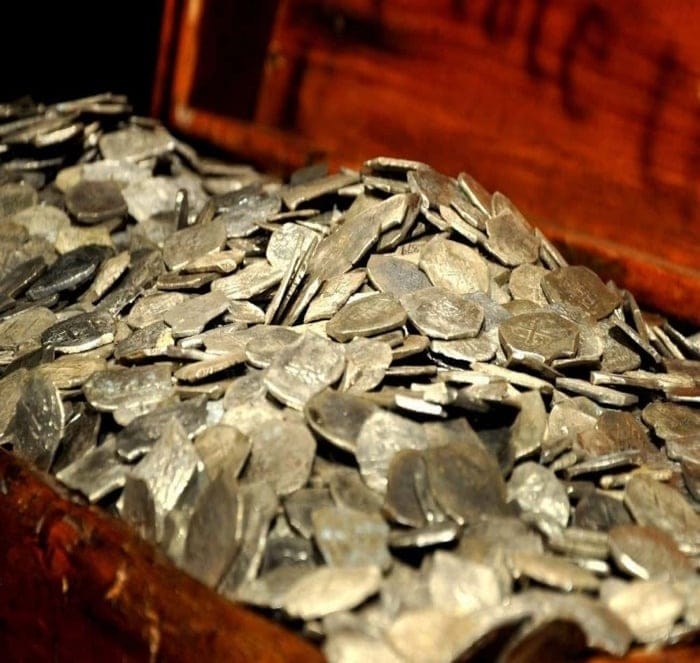
Photo: Theodore Scott / Wikimedia Commons / CC-BY 2.0
Pirates also took things of immediate practical value, such as booze, weapons, provisions, wood, and the like. The Whydah Gally is the only pirate ship from the Golden Age of Piracy that’s ever been authenticated. It was discovered near the coast of Cape Cod, along with gold, silver, and other riches that descended with it to the ocean floor.
Not All Pirates Were Men
In fact, some female corsairs took leadership roles over male pirates, and they were just as adventurous and full of malignant intentions. They were, however, heavily outnumbered throughout history by their male counterparts.

Photo: Alexandre Debelle / Wikimedia Commons / Public Domain
Some famous maritime criminals ladies include Mary Read and Anne Bonny, the latter of whom became Calico Jack’s lover and sea-roving partner in the Bahamas. After all three were captured and imprisoned, Bonny reportedly castigated Jack for not fighting like a man. Read died in prison. Calico Jack was executed in 1720. Nobody knows what happened to Anne Bonny. Whether she died in her cell or was eventually released, the bold woman disappeared like a phantom ship.
The Best Pirates Were Shrouded In Mystery
Nautical Archeology curator David Moore believes that the most skilled pirates in the 18th century left little evidence of their existence. Like a shining object in the distance that’s shrouded with mystery, these marauders were elusive and cunning.
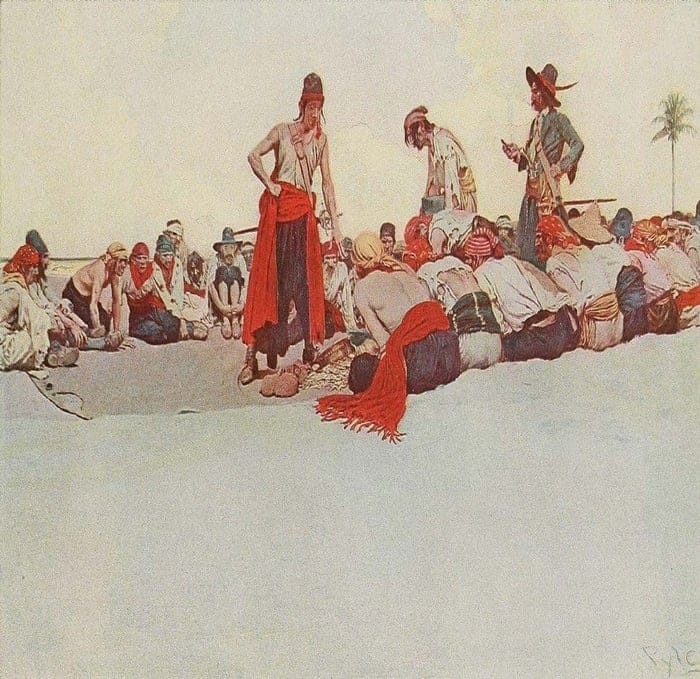
Photo: Howard Pyle / Wikimedia Commons / Public Domain
Meanwhile, mediocrity may have played a role in the creation of legends. Pirates who were defeated in battle, captured, and tried in court have become the more popular ones. Their exploits have been inflated through the grapevine, published, and inflated some more, creating legends built of anecdotes – the stuff of lore and literary exposure.
Dying In The Hands Of Pirates
Hands tied and blindfolded, prisoners were forced to walk off a plank at the side of a ship. Actually, this image is more of a product of pop culture than widespread pirate practice. There were many ways of killing and torturing mutineers. Indeed, walking the plank probably would have seemed boring to ancient pirates. Warning: The next paragraph is pretty brutal!
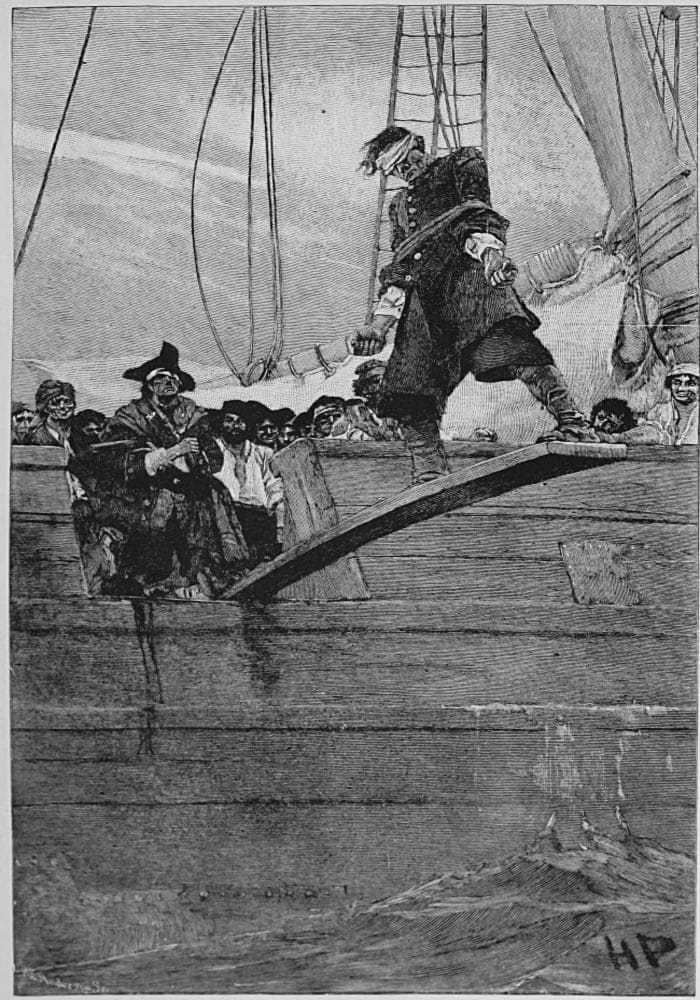
Photo: Howard Pyle / Wikimedia Commons / Public Domain
Roche Braziliano gained notoriety for roasting two farmers alive. There were accounts of pirates eating the hearts of captives. Then there was keelhauling. This involved throwing the roped-up victim overboard and then pulling the rope on the opposite side, dragging the man along the keel (the underwater underbelly of the ship). Shockingly, some people actually survived this ordeal.
A Slow And Lonely Death
Pirates who transgressed the laws of the outlaws were dealt with accordingly by their peers. Retribution could come if you abandoned your crew in the heat of battle, tried (and failed) to overthrow your captain, or committed some other unforgivable sin.
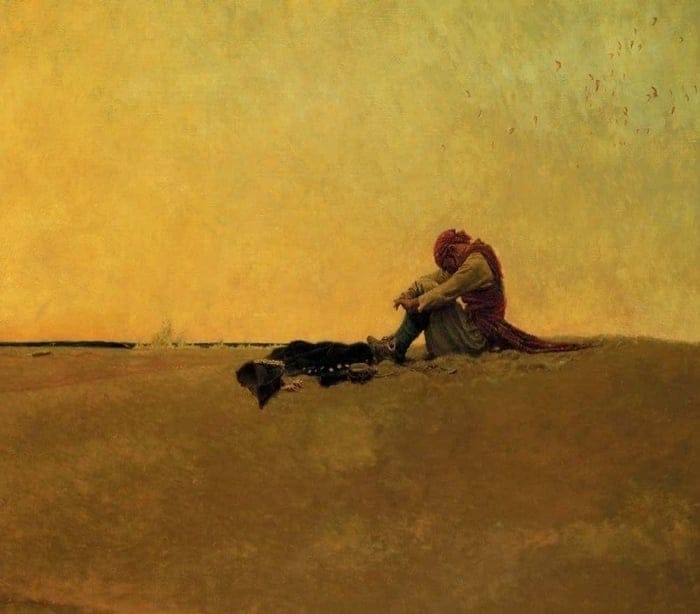
Photo: Howard Pyle / Wikimedia Commons / Public Domain
Instead of being instantly executed, they were left on the edge of oblivion – abandoned to die alone on a sandbar or a faraway island. The crew would leave a transgressor with nothing but a weapon he could use to kill himself. If the hunger and pain of loneliness became too much to handle for too long, a quicker way out was always available to a disgraced pirate.
Pirates Loved Beef
Pirates and seafarers alike had to make do with what they had while at sea. Fish, bits of turtle meat, and even adrift pigeons they happen to catch – all of these were means for survival. But history shows that beef was the buccaneers’ favorite dish.
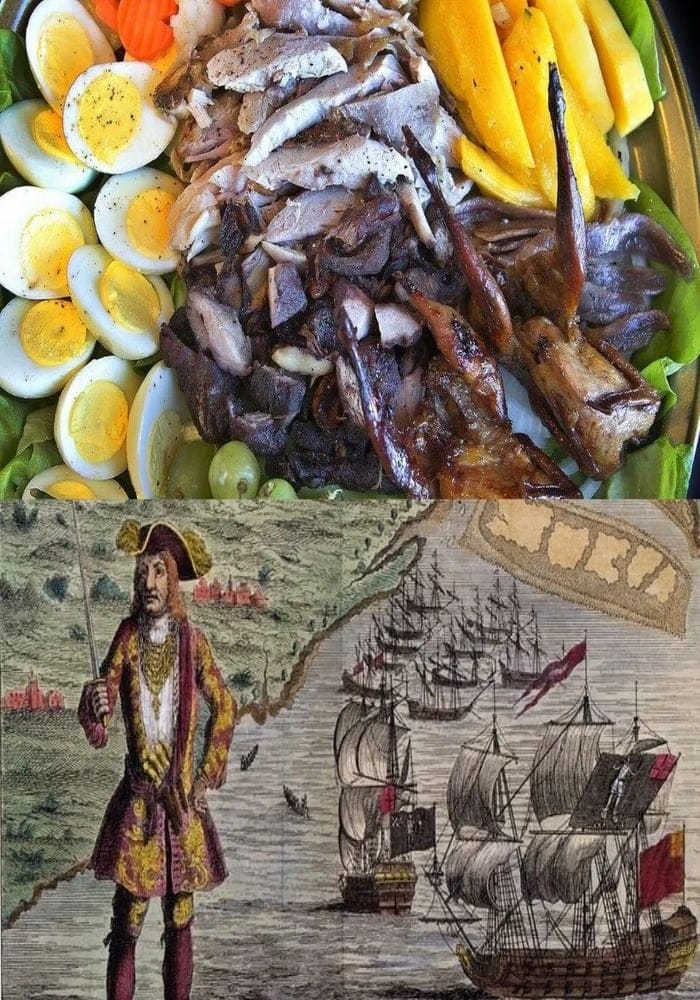
Pirates were Beef Eaters
The beef they brought for long journeys was heavily preserved, salted, and smoked. The meat would harden over time, and some used what they couldn’t chew as belt buckles. Decayed strips of mesh would draw the attention of maggots, but life at the high seas was hard, so they simply thought of these little critters as a rather lively garnish.
A Melange of Ingredients In Salmagundi
Pirates were masters of survival on the high seas. Knowing that their provisions wouldn’t last long, especially fruits and vegetables that become rancid in just a few days, they had to be excellent managers of their rations on board.
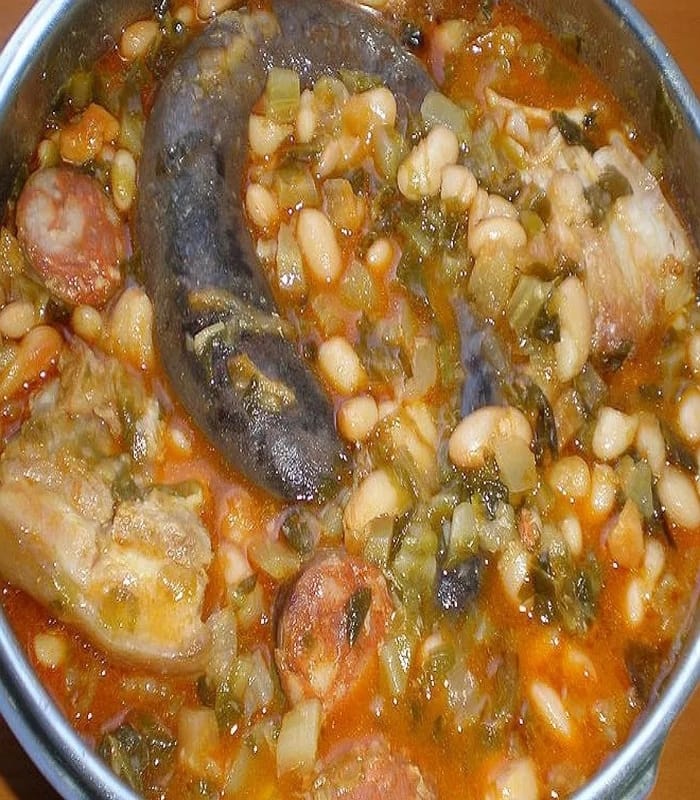
Pirates’ Popular Dish is called Salmagundi
Nothing could go to waste in their efforts to avoid dying of hunger. Bits and pieces of vegetables, scraps of animal meat, and whatever thingamabobs they could salvage from storage were cooked into an amorphous dish known as Salmagundi.
Sea Turtles Were A Treat For Pirates
Sea turtles often became accidental quarries to journeying pirates, innocently entangled in their nets or deliberately pursued by the famished crew. They aren’t too difficult to catch either, especially when they’re nesting on the shore. So, they became a regular dish for ancient marauders.
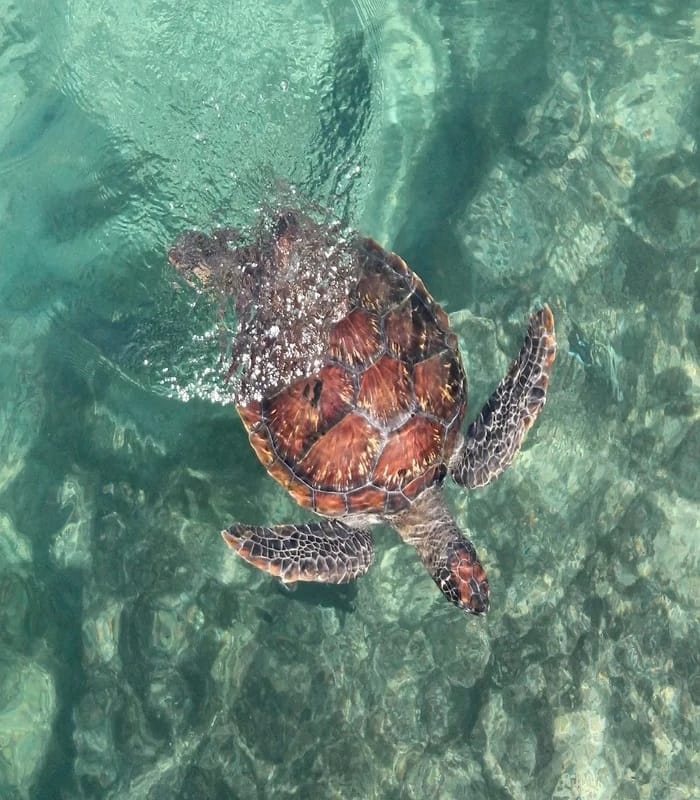
Turtle Meal
Often deprived of fresh stuff to eat, pirates rejoiced at the sight of a live sea turtle. This was a welcome change to the monotonous servings of overly salted smelly meat, maggots, and decaying vegetables.
Tough Living Conditions
The adage that one might die any day is heightened among outlaws during long expeditions across vast oceans. Provisions often fell short, and crew members had trouble sleeping in the hard and uncomfortable quarters of their constantly creaking ships. Beneath their cabins swayed turbid waters that stank of urine and all sorts of scraps trapped in the hull.

The Ship is not Comfortable
It was hard for pirates to stay dry or warm, especially after a storm. Health conditions could plunge to horrendous lows, making their labor doubly hard. These tough living conditions contributed to the high mortality rate among pirates.
Cabin Bread – A Pirate’s Staple Food
Bread was easy to bring along on marauding missions, tucked in a pocket, convenient to have whenever needed. Because flatbread and crackers were long-lasting, they became a staple in a pirate’s daily diet. But this wasn’t the fluffy type of bread we know today.
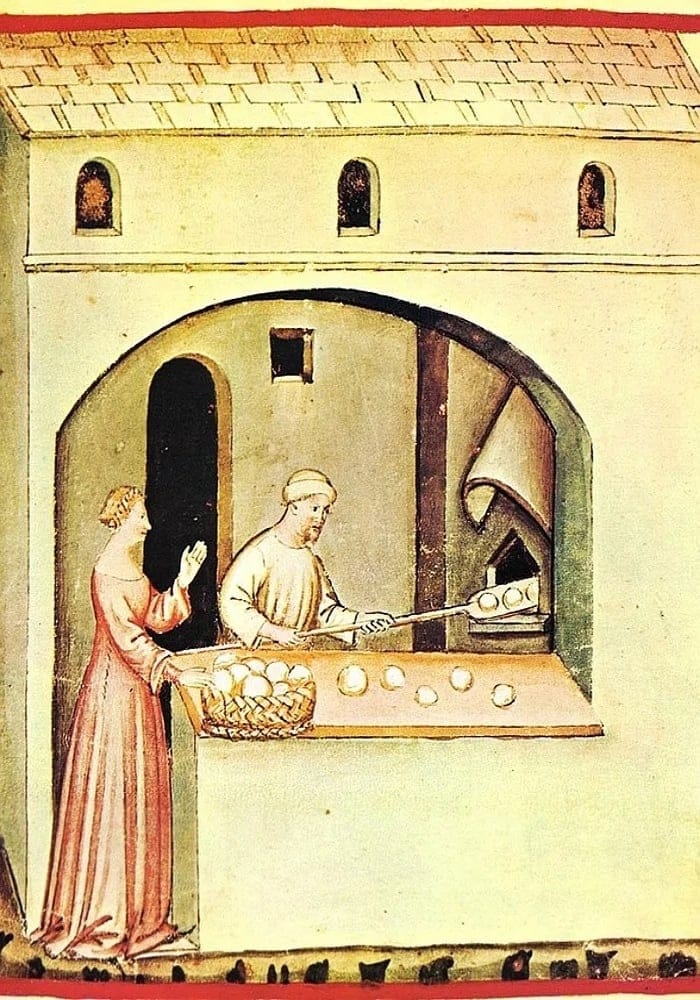
Pirate Ate Plenty of Bread
Pirates loved hardtacks, which were more like biscuits in toughness and texture. And because life can be really bleak in desultory, hit-and-miss voyages, they didn’t mind munching on bread infested with weevils and other insects.
Pirates Weren’t Knowledgeable About The Value Of Jewelry
For a group of people to dedicate most of their lives to earning a living through conquest, looting foreign ships, hunting for valuable cargo, it is ironic that pirates weren’t so well versed in the value of their riches. This conclusion was arrived at on account of their mishandling of precious cargo on many occasions.

Pirates Knew Little About the Worth of Jewelry
Instead of selling the jewelry they stole, many treated the pieces as collector’s items. There was even a tale of a disgruntled pirate who wanted his massive diamond sliced into bits because he found it an encumbrance to carry around.
Meal Preservation
Pirates of the 18th century didn’t have the luxury of refrigerators, and food preservation was a common problem they tackled during long-term voyages. This was especially difficult when traveling through the tropics, where the warm and humid weather made basic provisions spoil easily. So, pirates salted their meat and added herbs in the hopes of making it last longer.
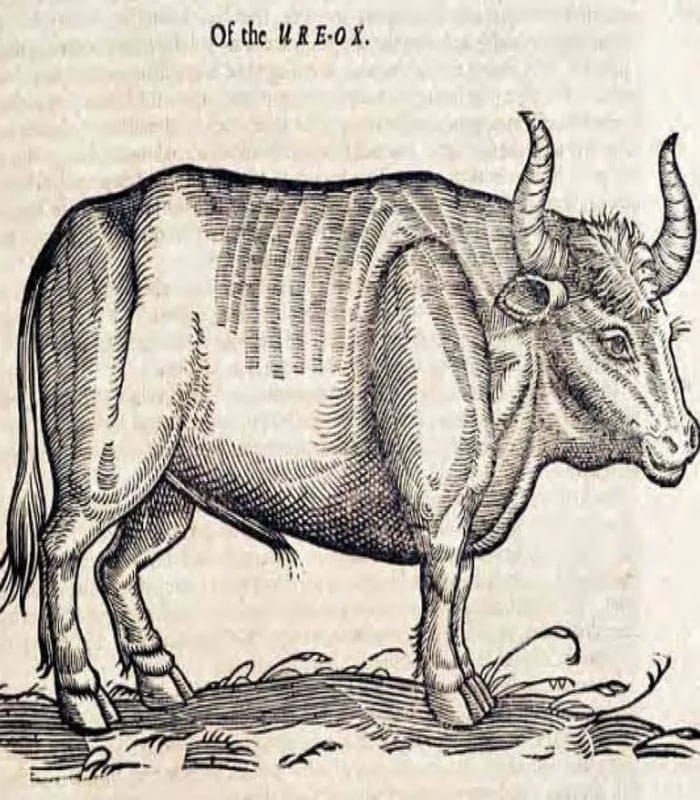
Pirates Preserved Meals
They would also dry meat in the sun with heavy seasoning to remove the moisture. This meant that their meals became less palatable, ingested more as a necessity than a delicious treat worth cherishing.
Pirates Were Big Spenders Who Squandered Their Loot
Oral history and popular beliefs have made treasure maps a favorite article associated with pirates. But history shows very little evidence of these infamous criminals burying their treasure. If they came upon gold and silver, their preferred course of action was to spend it all.
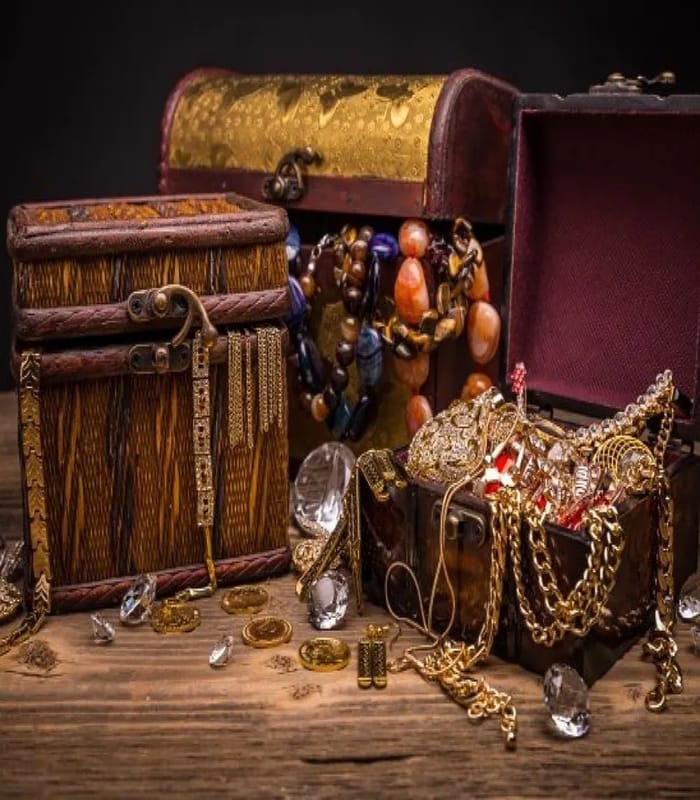
No Treasure Maps; Pirates Spent Booty
Pirates lived lives of debauchery and were highly unlikely to save for a rainy day. They drank a lot, partied hard when they could, and spent much of their loot on women. Most of them didn’t have much left to bury for the morrow.
Gainful Employment
Pirates deliberately sacked vessels they encountered at sea, regardless of their trade, political alliance, religion, or nationality, which made them a common enemy of all. However, these loutish lawbreakers were also heroes to the families they supported.
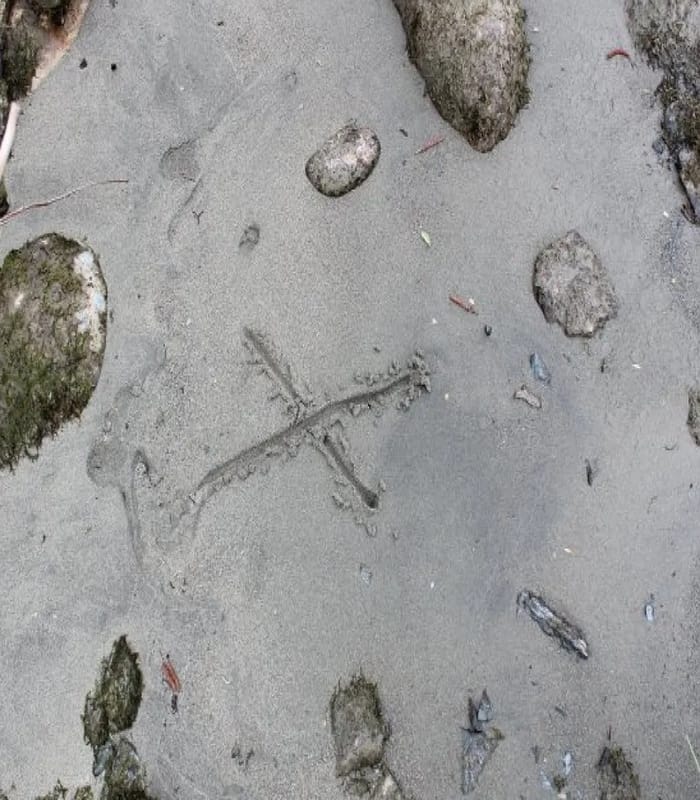
Pirates were Regular Workers
Piracy was their way of making a living. Though the profession lacked an in-built moral compass and legal backing, they felt their violence was justified. To them, it was a career no different from a man following his trade or an employee going to work in town. They elected their officers, paid their dues, got their fair share of the loot, and followed a pirate’s code.
Parrots On Pirate Ships
Pirate ships sailed for months at a time, and the longer they stayed offshore, the harder it was on the emotions of the crew. Homesickness grew into emotional waves larger than those that smashed the hull, beating into the chests of even the hardest of the lot. So pirates, especially ship captains, kept parrots as companions.

Pirates Had Parrots as Pets
Unlike dogs, these colorful birds didn’t weigh them down or consume too much food. Their upkeep required barely any effort or expense. Pirates loved their company, and in many ways, these birds helped them maintain their sanity amidst the vastness of the eternally blue sea.
Some Pirates Were Commissioned By The Government
Pirates who built a name for themselves for their leadership skills and deftness in maritime battles unexpectedly found a career beyond plundering and destruction. Captain Henry Morgan is an excellent example. He became infamous for his torture methods, and ruthlessness and so was commissioned by governments that didn’t want to do their own dirty work.
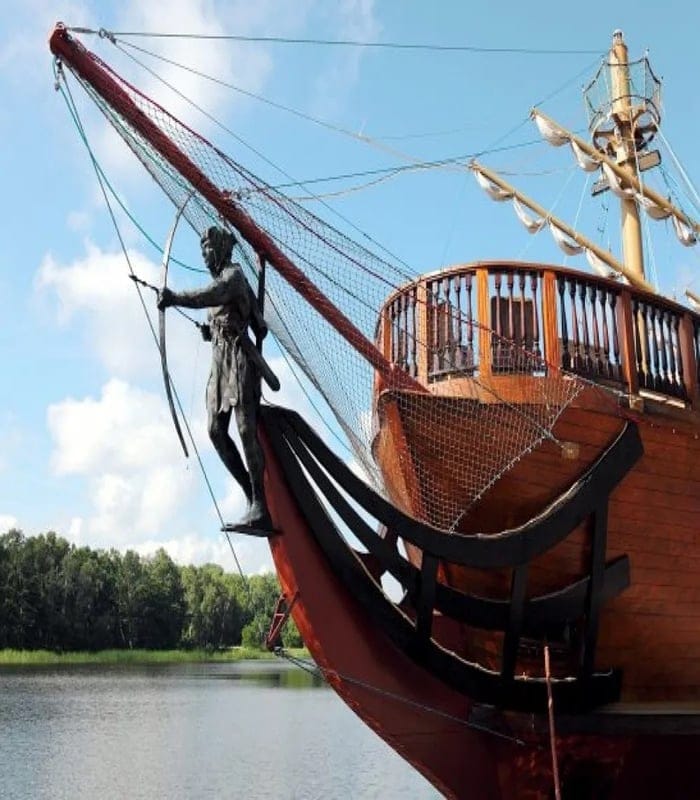
Ruthless Pirates May Work for the Government
Captain Morgan and his crew were paid to do the same piratical acts they’d been doing for years, but this time with legal authorization. Captain Morgan assaulted and destroyed many Spanish posts and cities for the Jamaican government. He grew so wealthy from the missions that he bought three plantations.
A Less Fishy Diet Than Most People Imagine
Fresh fish on a pirate’s plate would represent a break from the monotony of salty, rock-hard beef. It would have given them positive thoughts for the day and pleasure akin to hopefulness for a better life. But sadly, these intrepid adventurers were terrible at fishing.
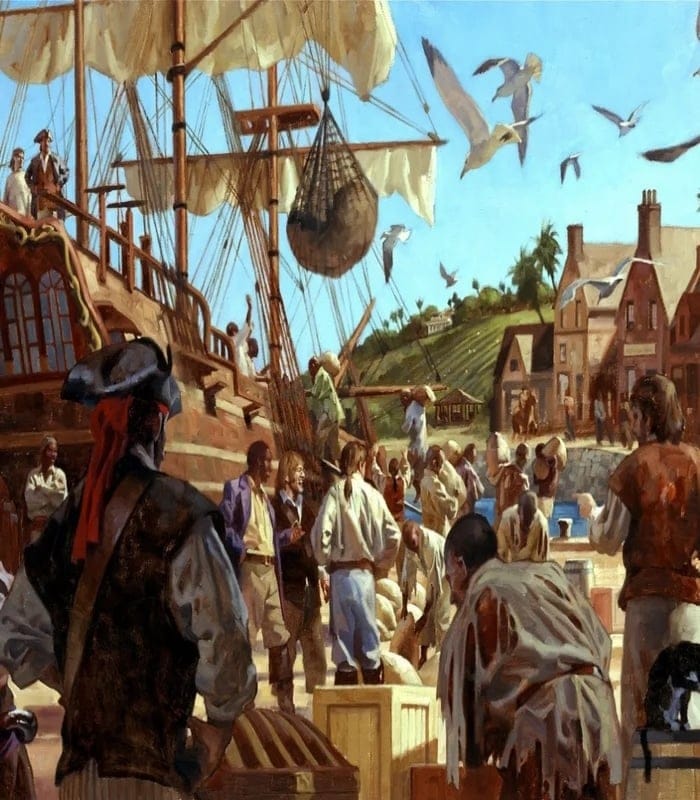
Pirates Did not Fish or Eat Much Seafood
The practice requires a lot of patience, and it just wasn’t their style. All of that waiting around made them feel foolish. Their preferred method for obtaining provisions was to pillage, taking what they wanted with force from other ships and coastal towns.
Heavy Drinkers
Many of the pirates’ activities were centered around the Caribbean, and that’s how rum became so popular among them and later on became known as the pirate’s drink. They drank a lot, and we can only imagine how rowdy they were, with so many stories to tell.
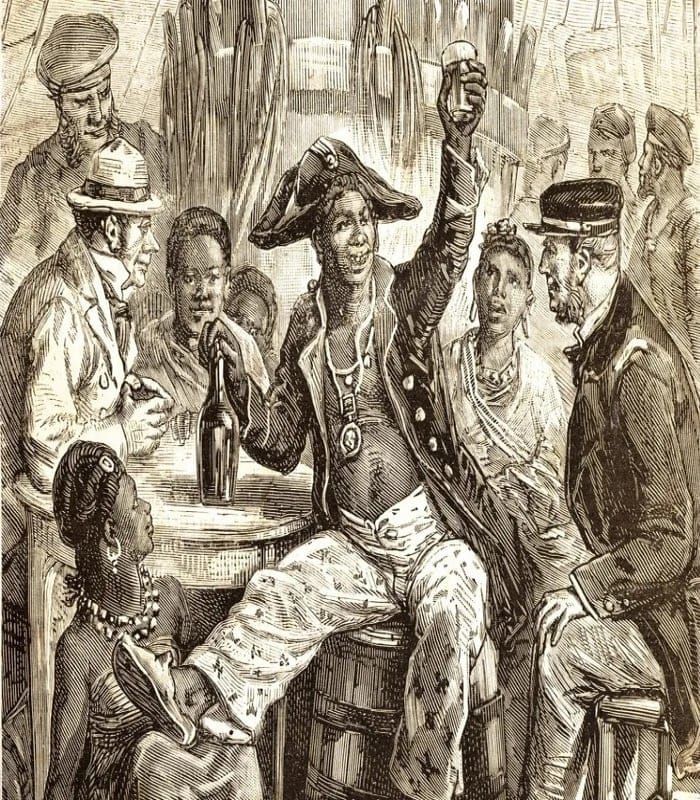
Pirates Created Several Alcohol Mixtures
Apart from augmenting their grog with lemon (the aforementioned bumbo), they also created a horrific mixture by putting raw eggs in water and adding beer and gin to make it a more potent cocktail.
They Ate Human Flesh
There are some obscure historical accounts of pirates eating human flesh, including the story of a slobbering malefactor who pulled out and ate the heart of an enemy who didn’t give in to his demands. But these actions were not a common part of the pirate code or way of life.
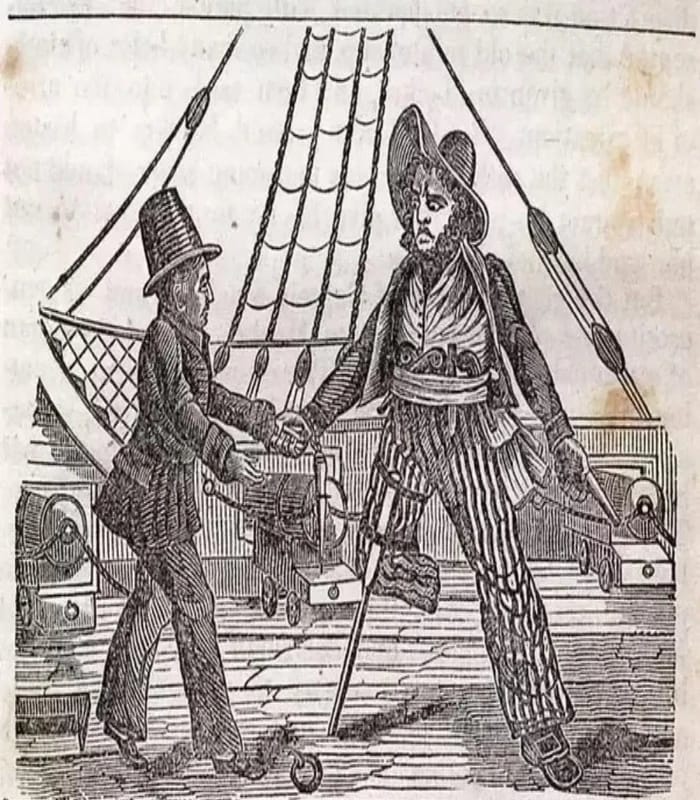
Pirates Sometimes Ate Leather or Other Humans When Starving
Pirates often found themselves in rotten luck, and at the apex of their starvation, some resorted to eating anything they could choke down, including leather and hair. Desperate to survive, some were forced to eat the flesh of their companions who’d died at sea.
Bread Soup
Hardtacks were simply composed of water and flour, sometimes sprinkled with salt. As you can imagine, they tasted incredibly bland. However, they were easy to prepare and didn’t spoil that easily. You could be sure that any pirates you encountered had a store of this bread tucked away somewhere on their ship.
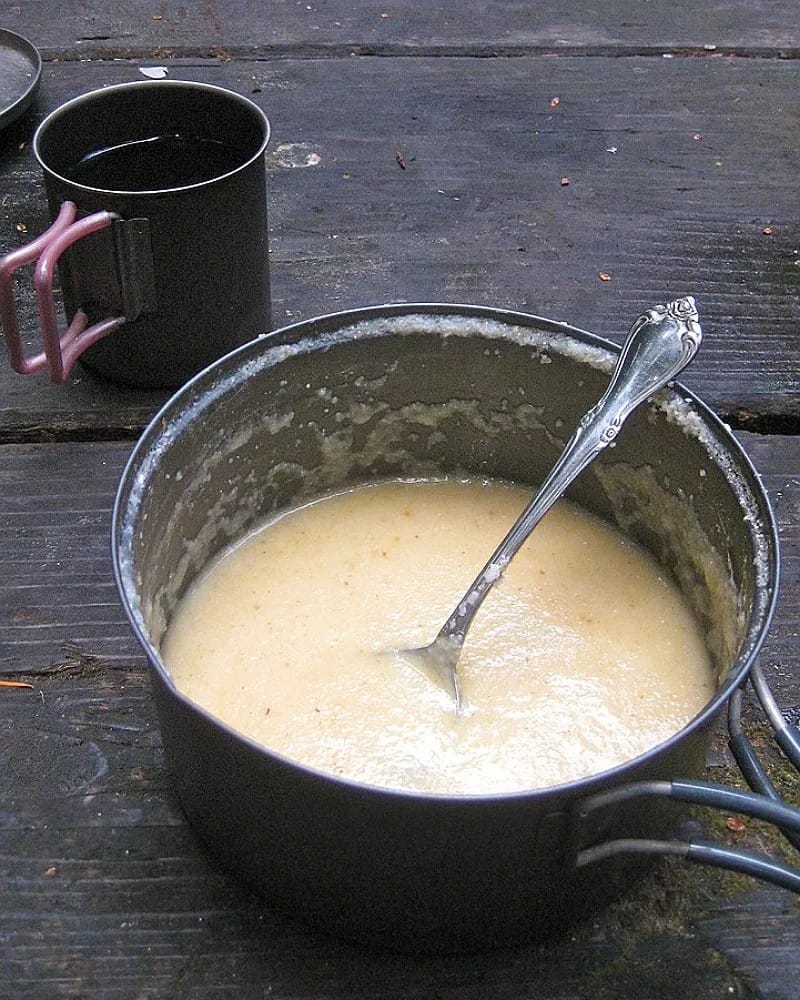
Pirate Porridge Soup
They liked to dip this flavorless bread in rum, which they had an abundance of in barrels. They also boiled it in sugar water to add some flavor. This imaginative pirate gruel made the crackers more interesting to consume. It also killed all the little insects that liked to burrow into the bread.
Perennial Insufficiency Of Fresh Goods
Freshness was a quality pirates only got to enjoy during their first few days of sailing. The limited greens and colorful fruits quickly lost their luster above the salty ocean, especially when pounded by extreme weather. The heat and humidity of the tropics could turn fresh food into brown mush in record time.
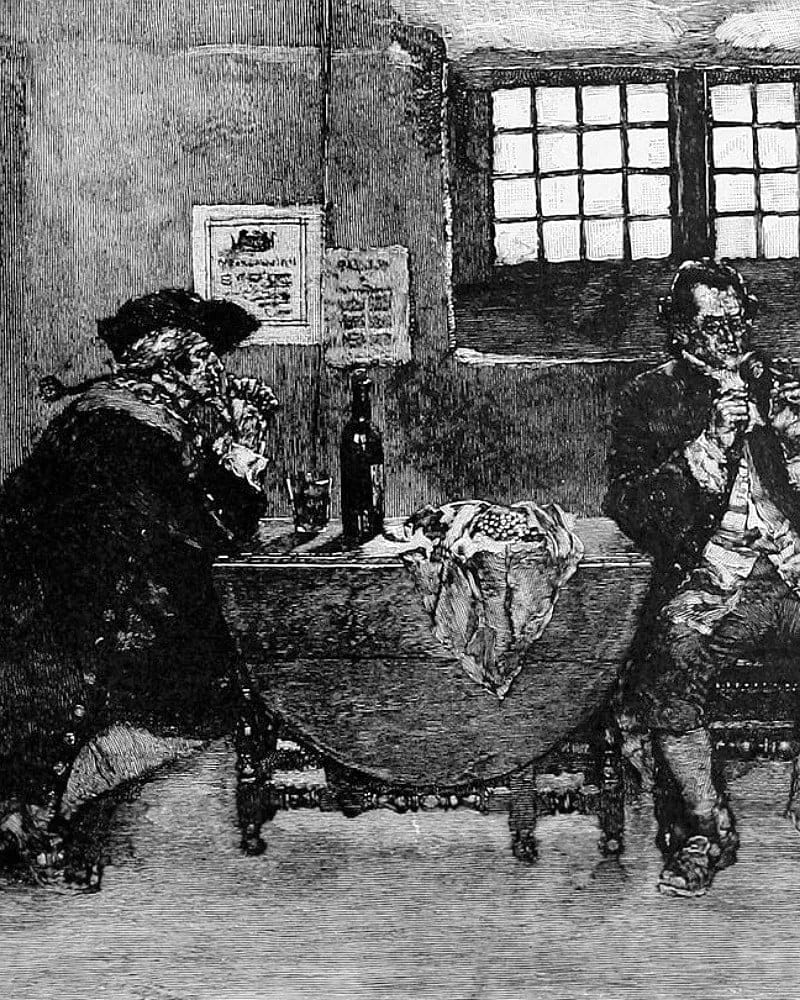
Not Enough Fresh Produce to go Around
What they stole from other ships generally wasn’t any fresher than their own stock. They could only wish they had the skill and the time to dock and fish, but that would also make them sitting ducks to a world of threats. Even their water supply turned stale in weeks.
Pirates Were Ironfisted And Ruthless
Buccaneers were strong-willed and brutal, ironfisted when it came to crew leadership, and vicious to combative prisoners. But this came with the territory. Captain Benjamin Hornigold opted not to avoid engaging the British and got countermanded by his men, who interpreted his tactic as a sign of weakness.

Pirates Were Brutal and Ruthless
Many pirates were exceptionally violent. Ching Shih, for example, liked to pop the eyeballs from his captives and nail them to the deck of his ship. Daniel Montbars sliced prisoners up and impaled them with their intestines dangling.
Pirate Speech
A common misconception about old-timer pirates is that they spoke in a distinctive accent – a regional tone that careful listeners can somehow trace to a particular town or country. But this is impossible since they came from various corners of the globe and spoke different languages.
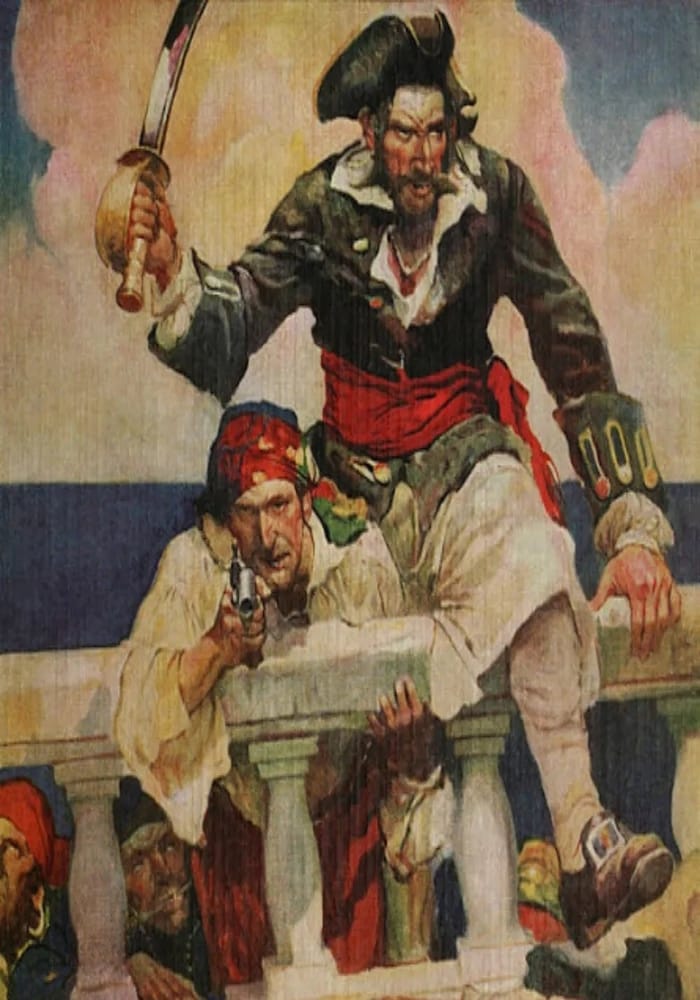
Pirates Didn’t Growl “Arrrrr” or Have a Universal Accent
They also didn’t really say “yarrr!” when they got excited. These utterances, yarrr, arrr, or arrg are only heard in movies as invented pirate words spoken by fictional pirate characters. There’s no evidence that such language was ever used by real pirates.
Pirates And Their Fondness For Drinking
After sailing seemingly endless oceans and subsisting in a wooden ship that has very limited space to roam (not to mention its nagging discomforts and unhealthy accommodations), it’s hard to blame pirates for wanting a good time for a change. They loved the fast life, and this included copious amounts of alcohol.
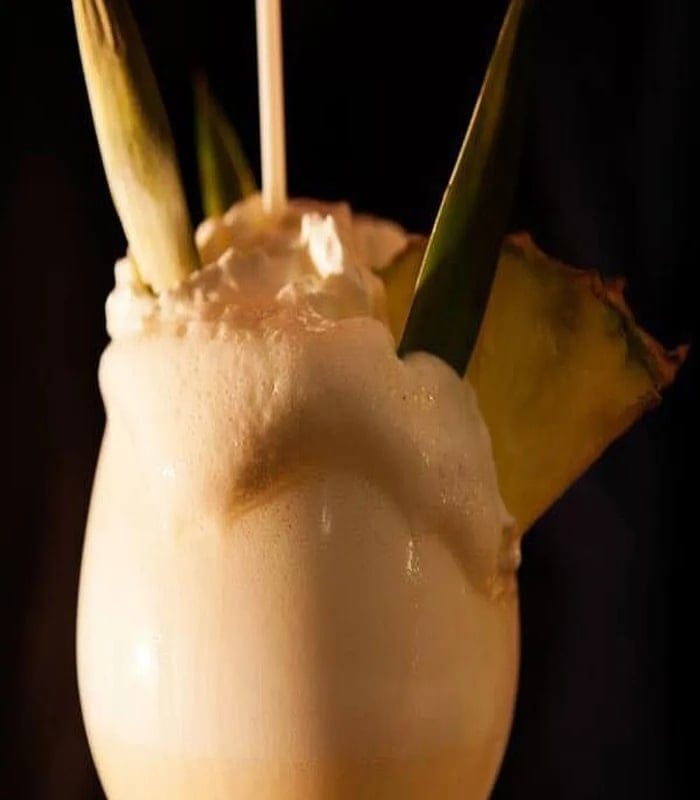
]Pirates Prefer Alcohol to Water
Pirates loved to drink and preferred spirits over dull water. Of course, when water is so prone to going bad and getting filled with bacteria, this only makes sense. Pirates also consumed alcohol because it made them feel warm during cold weather. With all these forces working together, drinking became an intrinsic part of their lifestyle.
